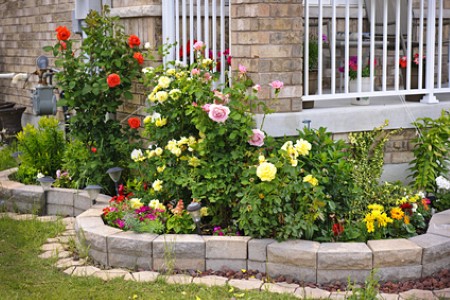Different Types of Hammond Retaining Walls and Why You Need Them

If your home is on top or near sloped ground, then it's necessary that you build retaining walls in order to support the built up pressure. Otherwise, your home might incur some serious damages and its value will be lowered in turn. There are other good reasons on why using a retaining wall is necessary. These reasons are:
- As mentioned, a retaining wall can withstand pressure from sloped walls.
- Prevent soil erosion and flooding during wet climates.
- Enhance the beauty of the home and its surrounding vicinity.
Now wouldn't those be neat? But how exactly does a retaining wall accomplish all of these? That would depend on the type of retaining wall, which will be discussed later in this article, but the general reason is that Hammond retaining walls have been structured in a way that can divert or compartmentalize the pressure caused by sloping earth.
Furthermore, a retaining wall has seepage holes where water can pass through and be redirected to a place where no flooding can possibly occur. These seepage holes are useful also in dry climates. The earth can maintain its moisture during dry climates since the water is collected through seepage holes or irrigation pathways and is kept there without accumulating too much pressure.
The retaining wall can be incorporated into the design of the whole house. The type of enhancement popular on retaining walls in Hammond is the stepped retaining wall. Through a stepped retaining wall, different levels can be created and you can redecorate each one however you like it. You can put different types of flowers, plants, stone sculptures, and more.
There are different types of retaining walls to choose from. The best one is dependent on the dimensions of the sloping ground.
-
Gravity Retaining Wall
This type of wall relies heavily on the mass of the wall being used. That's why large pieces of stone are recommended. If the wall isn't tightly packed enough, the internal leverage will be too high and will cause the wall to topple. The gravity retaining wall is more suited to small spaces since there's no real risk of toppling due to heavy mass accumulation.
-
Piling Wall
Using a thin pile that's long enough to drive several feet through the ground, the wall gets enough foundation to be able to withstand accumulated pressure caused by sloping ground. This works best for soft earth and small spaces. Best material for piling walls are steel and wood.
-
Cantilevered Retaining Wall
Made of tall, thin steel reinforced concrete, this wall uses an inverted T stationed in the earth near the wall so that the pressure is transferred towards the base of the wall. That pressure is supported by a second lever arm horizontally positioned at the base.
-
Anchored Retaining Wall
By placing an anchor through the wall and into the earth at an angle, accumulated pressure is redistributed. There are many types of anchors that can be used, with the best one depending on the make and dimensions of the sloped ground, and the thickness of the retaining wall.
Lastly, you can contact contractors and acquire the materials required to build retaining walls.

